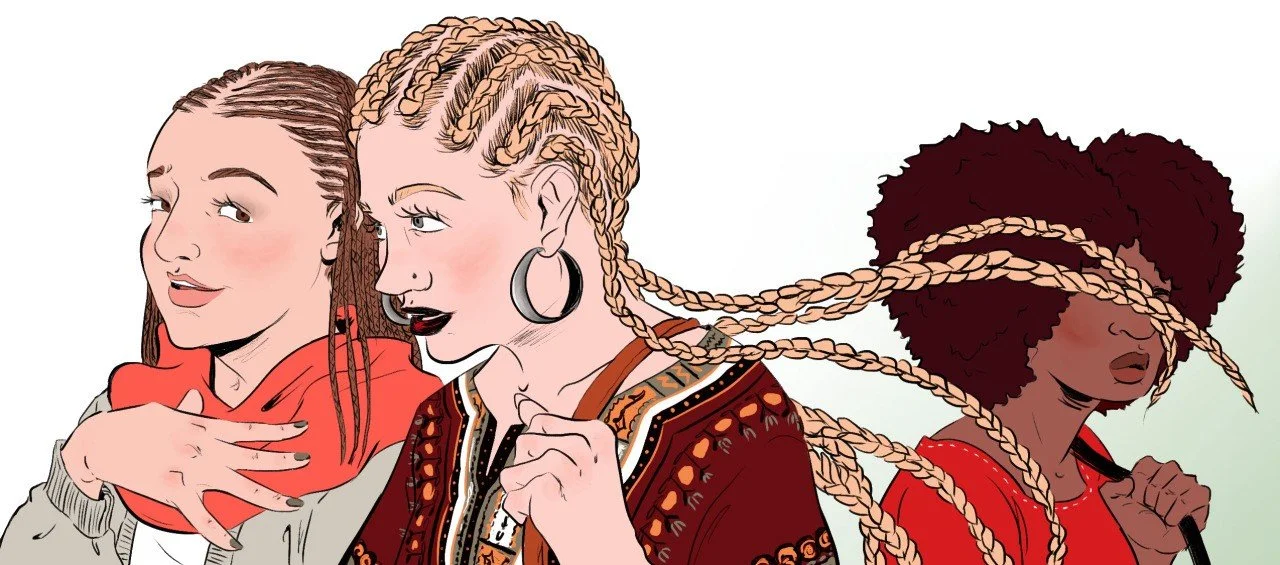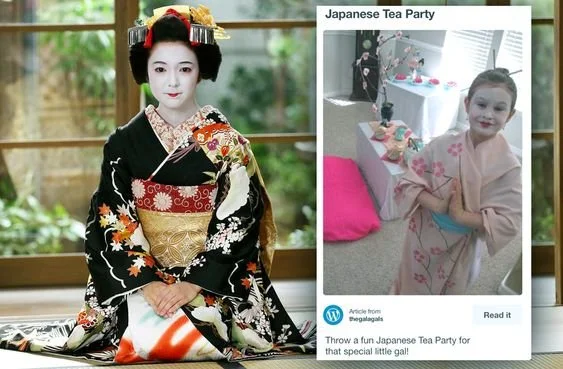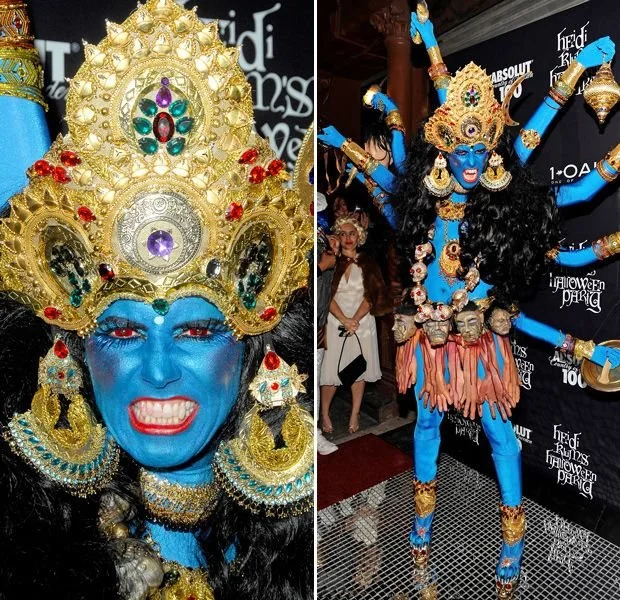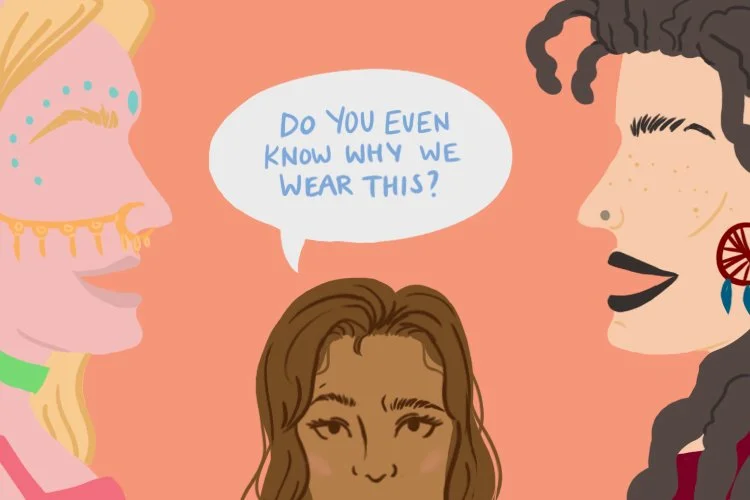Cultural Appropriation or Appreciation? Make sure you know the difference.
Image credit: Shannon Wright
Definition
Although cultural appropriation itself has been around for centuries, the term was officially recorded in 2017 by the Oxford Dictionary:
“the unacknowledged or inappropriate adoption of the customs, practices, ideas, etc. of one people or society by members of another and typically more dominant people or society.”
Let’s break the definition down:
The minority group is usually the one that has experienced prolonged oppression. This oppression can take various forms, such as invasion, slavery and colonialism, and structural discrimination, such as racism, sexism, Islamophobia.
And the adoption typically means taking elements from another ethnic group and transforming them into a pop-cultural item.
Negative effects
The pervasiveness of cultural appropriation in the times of consumerism and mass production does not pass without consequences. What could be bad in those seemingly innocuous Pocahontas Halloween costumes, “traditional Mexican” taco restaurants and “authentic Thai” massage salons? Here’s what…
Cultural appropriation:
Allows one ethnic group to take the elements from another, which could have a great cultural or historical significance, or even be sacred. But through cultural appropriation, these are downgraded and used meaninglessly for profit, entertainment, decoration and other purposes.
Devalues the culture, its historical heritage, art and traditions.
Gives people permission to “try on” another ethnicity, to which they don’t belong.
Draws upon stereotypes and cultivates a very limited and distorted image of an ethnic group.
Continues the implicit oppression. When a historically dominant group continues to take away elements of the non-dominant one, it’s most often done without due respect. For example, when the group that colonised the land keeps using aspects of the indigenous culture for production and profit, it’s practically equal to taking ownership of their land.
Divides people and reinforces prejudices.
Examples
Cultural appropriation goes hand-in-hand with pop culture. So, most often, aesthetic aspects and items become the target. These are anything that is easy to replicate: clothing and hairstyles, arts, tattoos, food, music and dance, language and slang, beauty and healthcare, religious symbols and practices. You name it.
To better understand the negative implications, let’s look at some examples, where incompetent ‘borrowing’ caused a considerable public response.
In pursuit of extraordinary ideas and exotic looks, fashion brands often go too far and come under fire for blatant cultural insensitivity.
Dolce & Gabbana’s ad campaign “DG Loves China”
D&G posted three videos of a Chinese model eating Italian foods like pizza and pasta with chopsticks.
The 2018 social media marketing campaign was intended to pay tribute to China and its consumers, but it backfired.
The videos trivialised the culture and depicted Chinese women in a stereotypical and even racist way. Such disrespect caused an instant uproar from the Chinese public. The brand deleted the post less than 24 hours after publication.
The Chinese publication Jing Daily, dedicated to luxury consumer trends, commented that the videos made “big mistakes in tone and taste”.
Gucci appropriating Sikh Turbans, niqabs, and hijabs in Milan Fashion Week Show 2018
Gucci was accused of appropriating garments and symbols with a religious significance – bindis, hijabs, niqabs, Sikh turbans.
The collection received a lot of public response, from questioning “why Gucci couldn’t have just found a Sikh model?” to real resentment. Wearing turbans as a fashion item is offensive not only because it devalues the cultural and religious symbol, but also because Sikhs are actually targeted with violence for wearing turbans in public.
“Gucci got to pick and choose from cultural imagery all the things that are aligned to their ‘fantasy’ narrative without any consequences, and then so easily put on white skin. What message does that send? That it’s ok to wear a hijab if you’re young, beautiful, rich, and white but not if you’re actually a Muslim or a person of color? It may seem like borrowing or being inspired by something seemingly superficial, but what’s not being borrowed is the social implications, the prejudice, and the internalized racism.”
(Fashion photographer Faiyaz Kolia, for Indie Magazine)
Heidi Klum’s controversial Halloween costume
Supermodel Heidi Klum has a reputation for preparing unrivalled Halloween costumes year after year. But in 2008, this reputation was tarnished when she dressed up like the Hindu goddess Kali.
Kali (Sanskrit: “She Who Is Black” or “She Who Is Death”) is a Hinduist goddess of time, doomsday, and death. Kali is worshipped throughout India but particularly in Kashmir, Kerala, South India, Bengal, and Assam.
Impersonating Kali is not unusual: in India, adherents of Hinduism, both children and adults do this during festivals and celebrations. The difference and the problem here is that Halloween, as well as Heidi’s choice, have nothing to do with the Hindu religion. The model turned a sacred figure into a comical character for a dress-up party:
“I loved it because she’s so mean and killed all these different people and [had] fingers hanging off [her] and little shrunken heads everywhere.”
Nevada-based Hindu priest Rajan Zed demanded the supermodel tender a public apology:
“Goddess Kali is highly revered in Hinduism and she is meant to be worshipped in temples and not to be used in clubs for publicity stunts or thrown around loosely for dramatic effects”.
Now what?
Does it mean you must only stay in the cultural lane you were born into, and never touch aspects of others’ cultures? Not at all.
Compare these two scenarios.
You are invited to a fancy dress party. You want to go for something colourful and exotic and choose to wear an Indian sari and draw henna tattoos on your hands.
You are invited to your Indian friends’ wedding. Your friend lends you a sari and helps you draw a henna tattoo, so that you could fully participate in the traditional celebration.
Can you spot the difference? The first scenario is a textbook case of Appropriation. But the second is what you should aim for – Cultural Appreciation.
Cultural Appreciation
Unlike appropriation, which involves using elements of another culture carelessly for your personal gain, appreciation is an effort to understand the culture, learn about it and connect with its people.
Appreciation can include borrowing too, but only when it’s relevant, respectful and mindful. Appreciation means sincere interest, involvement and cross-cultural exchange.
Example
It may have seemed like fashion is a synonym to cultural appropriation. But that’s not always the case.
Osklen is a popular Brazilian brand. Its 2016 spring collection was inspired by the Asháninka, an indigenous people living in the Brazilian and Peruvian rainforest. And it’s an example of cultural appreciation done right:
Firstly, the team travelled to meet the tribe, and learn about their way of living: “We went there last June, during the annual festival when the tribe celebrates the demarcation of the indigenous land 23 years ago. Our teams of nine people stayed in some cabins without walls. We slept either in hammocks or in inflatable mattresses on the floor” (the Osklen founder Oskar Metsavahtfor Huffpost).
Credit: Oskar Metsavaht. Metsavaht, Nina Braga, and Ashaninka children.
Secondly, Osklen did not re-purpose traditional clothing for a general consumer, as many other brands do. His strategy was more intricate. The “Amazon red” became the theme colour of the collection; photos of tribal tattoos, animals and the forest were re-sized and printed on the fabrics and the crisscross shape of women’s fabric slings for carrying children inspired the dress styles.
Osklen’s Spring 2016 collection (Oskar Metsavaht / Lynda Churilla / Osklen)
Thirdly, Osklen paid back to the people for borrowing elements of their culture. The collection was called Ashaninka and the tribe received royalties, which covered various improvements to the community, such as building a school. Also, the collection release, along with a documentary about the Ashaninka community, directed by Metsavaht, was part of the initiative aimed at increasing public awareness and combating illegal logging and environmental degradation.
How to Appreciate, and not to Appropriate?
Examine your own culture.
To better understand other cultures, you need to understand your own first. When you decide to use/address/adopt an element of another culture, think for a moment:
Would you be offended if someone used an element from your culture in a similar way? Would they understand its real meaning then? Are you doing the same now?
Educate yourself.
Broaden your outlook, study history, geography and ethnography. It will help you develop better critical thinking and recognize cultural appropriation easier.
Know your reasons why.
Even if public insults are not part of your plan, think about why you want to refer to this culture in the first place. Before you start, ask yourself these questions:
What’s the purpose of using these cultural elements? Who will benefit from it: you alone, or people who belong to this culture?
Don’t borrow if you are unsure.
Only refer to the culture that you’ve explored in-depth. Only if you have profound knowledge, if you have learned from people who belong to this culture, and if you can educate others correctly on this culture.
Think of this:
How well do you understand this culture?
Are you honouring this culture or mimicking it?
Are you drawing on stereotypes or showing the complex and fluid nature of the culture?
Mind the context.
Some cultural elements have a significant meaning and can only be used in a certain context or situation. Make sure you know:
Where is it, and is it not, appropriate to use this cultural aspect?
Engage.
It’s not enough to just “dedicate” your initiative to a culture or a country. Or cherry-pick your preferred cultural aspects. It’s crucial to involve people who are part of it, encourage them to contribute, listen to their stories and learn from them.
Don’t forget to check:
Is your initiative inclusive?
Do you refer to the culture or engage with it?
How authentic are this initiative and the sources you employ for it?
Image Credit: Soni López-Chávez
Conclusion
Сross-cultural exchange is as natural and inevitable as globalisation and international mobility. When done right, it can even be positive. Without the exchange of traditions, knowledge and art, there wouldn’t be any technological nor cultural progress.
So, this article isn’t trying to say that the cultural appropriation police should intensify efforts to catch and prosecute the ‘thieves’. Diversity is beautiful and must be celebrated. What we do need as marketers, businesses, creators and even the general public, is to make sure we ‘’borrow’, ‘depict’ and ‘dedicate’ mindfully, competently and with the right intentions.












